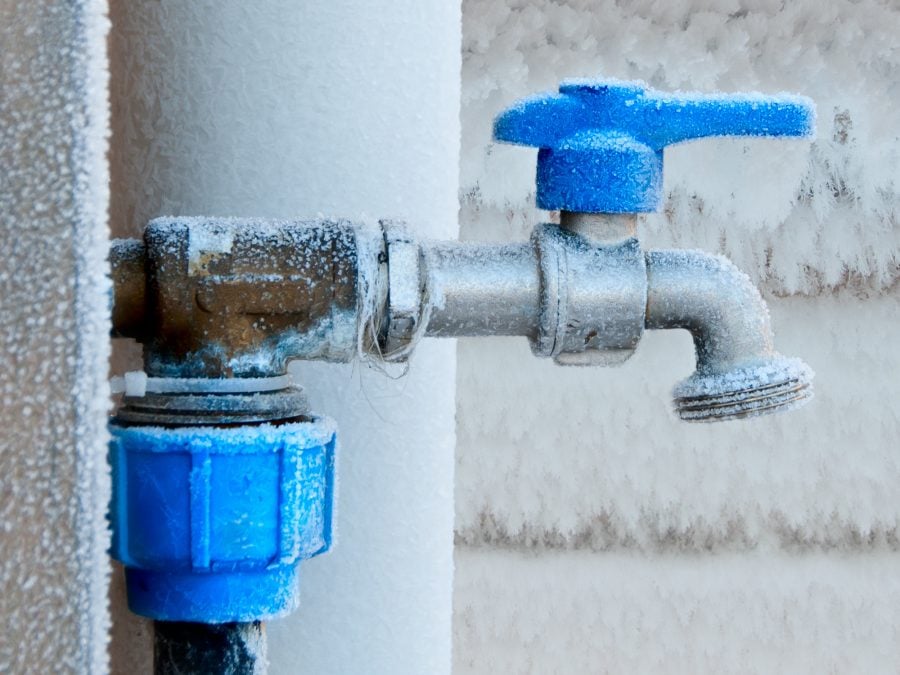Essential Tips to Protect Against Frozen Plumbing in Winter
Essential Tips to Protect Against Frozen Plumbing in Winter
Blog Article
Have you been trying to locate facts and techniques around Helpful Tips to Prevent Frozen Pipes this Winter?

Cold weather can damage your plumbing, especially by freezing pipelines. Right here's just how to prevent it from taking place and what to do if it does.
Introduction
As temperature levels decrease, the threat of icy pipes increases, possibly resulting in pricey repair services and water damages. Understanding just how to avoid icy pipes is critical for homeowners in cold climates.
Avoidance Tips
Protecting susceptible pipes
Wrap pipelines in insulation sleeves or make use of warmth tape to secure them from freezing temperature levels. Focus on pipelines in unheated or exterior areas of the home.
Home heating methods
Keep interior spaces effectively heated up, specifically areas with plumbing. Open up cabinet doors to permit warm air to distribute around pipes under sinks.
Exactly how to recognize icy pipes
Look for lowered water flow from faucets, unusual smells or sounds from pipelines, and noticeable frost on subjected pipes.
Long-Term Solutions
Structural modifications
Think about rerouting pipelines far from outside wall surfaces or unheated areas. Add additional insulation to attics, basements, and crawl spaces.
Upgrading insulation
Purchase top quality insulation for pipes, attic rooms, and walls. Correct insulation assists keep regular temperatures and lowers the threat of icy pipes.
Shielding Outside Plumbing
Yard pipes and outdoor faucets
Separate and drain pipes yard hose pipes before winter. Mount frost-proof faucets or cover outside faucets with protected caps.
Understanding Icy Pipelines
What causes pipes to ice up?
Pipelines ice up when revealed to temperatures listed below 32 ° F (0 ° C) for prolonged durations. As water inside the pipes freezes, it expands, taxing the pipe wall surfaces and possibly causing them to rupture.
Risks and damages
Frozen pipelines can result in supply of water disruptions, home damages, and costly fixings. Burst pipes can flood homes and create substantial architectural damages.
Indicators of Frozen Water Lines
Recognizing frozen pipes early can prevent them from bursting.
What to Do If Your Pipelines Freeze
Immediate actions to take
If you think icy pipes, keep faucets open up to soothe pressure as the ice melts. Make use of a hairdryer or towels soaked in hot water to thaw pipes gradually.
Conclusion
Preventing icy pipes needs proactive steps and quick responses. By recognizing the causes, signs, and preventive measures, homeowners can protect their plumbing during cold weather.
5 Ways to Prevent Frozen Pipes
Drain Outdoor Faucets and Disconnect Hoses
First, close the shut-off valve that controls the flow of water in the pipe to your outdoor faucet. Then, head outside to disconnect and drain your hose and open the outdoor faucet to allow the water to completely drain out of the line. Turn off the faucet when done. Finally, head back to the shut-off valve and drain the remaining water inside the pipe into a bucket or container. Additionally, if you have a home irrigation system, you should consider hiring an expert to clear the system of water each year.
Insulate Pipes
One of the best and most cost-effective methods for preventing frozen water pipes is to wrap your pipes with insulation. This is especially important for areas in your home that aren’t exposed to heat, such as an attic. We suggest using foam sleeves, which can typically be found at your local hardware store.
Keep Heat Running at 65
Your pipes are located inside your walls, and the temperature there is much colder than the rest of the house. To prevent your pipes from freezing, The Insurance Information Institute suggests that you keep your home heated to at least 65 degrees, even when traveling. You may want to invest in smart devices that can keep an eye on the temperature in your home while you’re away.
Leave Water Dripping
Moving water — even a small trickle — can prevent ice from forming inside your pipes. When freezing temps are imminent, start a drip of water from all faucets that serve exposed pipes. Leaving a few faucets running will also help relieve pressure inside the pipes and help prevent a rupture if the water inside freezes.
Open Cupboard Doors
Warm your kitchen and bathroom pipes by opening cupboards and vanities. You should also leave your interior doors ajar to help warm air circulate evenly throughout your home.

I came across that blog posting about How to Prevent Your Pipes From Freezing when doing a search on the web. Loved our piece? Please quickly share it. Let another person locate it. Thanks a bunch for your time. Kindly come visit our site back soon.
This Website Report this page